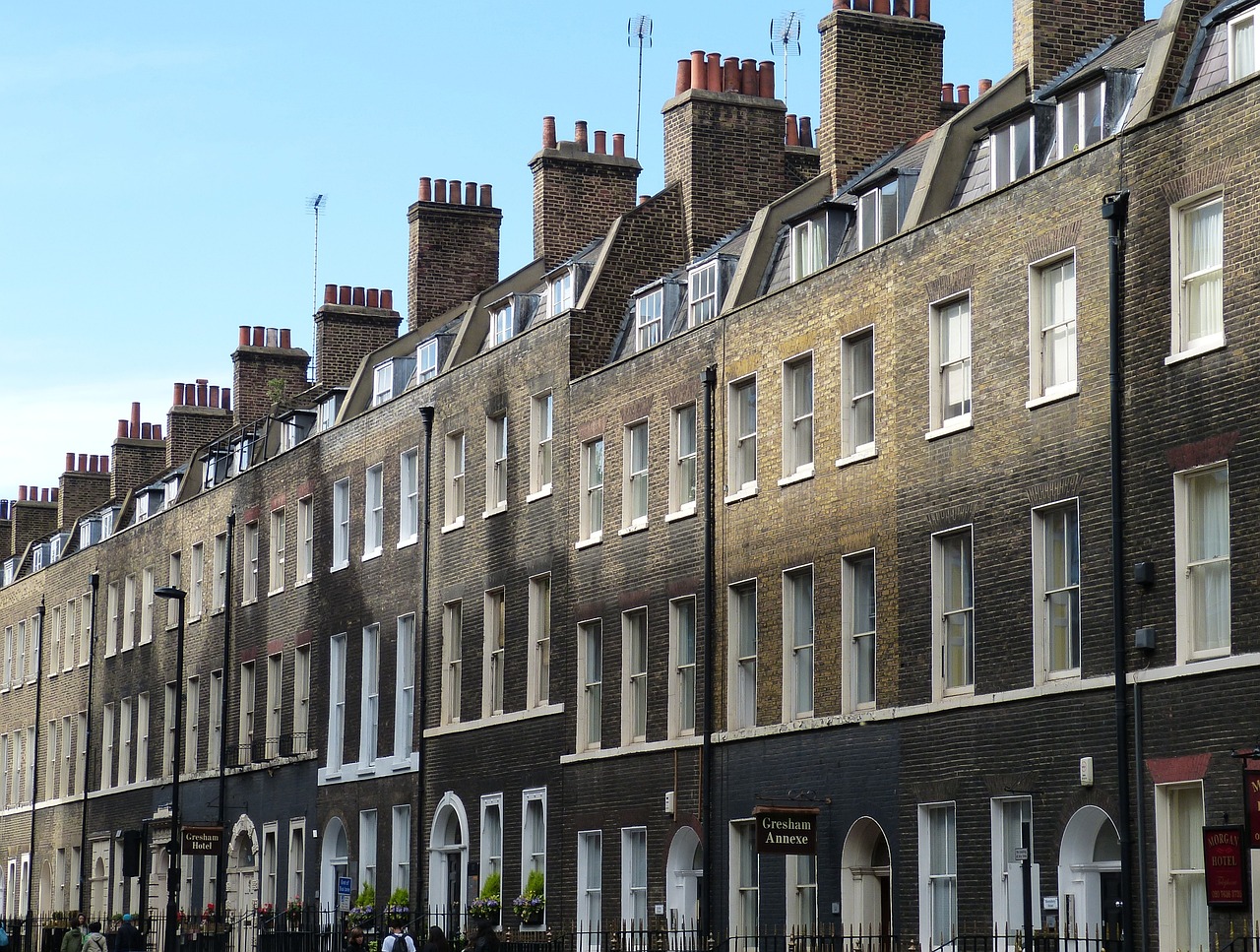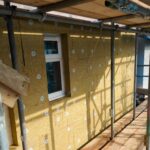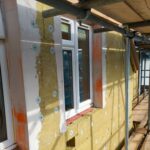In Retrofit by Robert Wheeler / 10 April 2024 / 0 comments

As the UK continues its commitment to reducing carbon emissions and combating climate change, the retrofitting of houses plays a crucial role in achieving energy efficiency targets. Retrofitting involves upgrading existing buildings to improve their energy performance, ultimately reducing energy consumption and emissions.
This blog post examines the pressing need for retrofitting in the UK, discussing the current state of the housing stock, energy efficiency targets and regulations, as well as the benefits, challenges, and potential cost implications. Additionally, we explore various retrofitting strategies, highlight successful case studies, and discuss the future outlook for widespread house retrofitting in the UK.
Introduction: The importance of retrofitting houses in the UK
Understanding the significance of retrofitting for energy efficiency
Retrofitting may sound like a fancy term, but it holds great importance when it comes to making houses in the UK more energy-efficient. In simple terms, retrofitting involves making improvements and upgrades to existing homes to reduce energy consumption and carbon emissions.
Energy efficiency is not just a buzzword; it is a crucial step in combating climate change and reducing our carbon footprint. As the housing sector accounts for a significant portion of the UK’s carbon emissions, retrofitting has become an essential solution to make homes more sustainable and environmentally friendly.
Current situation: Assessment of the existing housing stock
Evaluating the energy performance of UK houses
Before we delve into the numbers, it’s essential to understand the current energy performance of UK houses. Unfortunately, many homes in the country are energy-inefficient and suffer from poor insulation, outdated heating systems, and inadequate ventilation.
Approximately 80% of the houses that will be standing in 2050 have already been built, which means we need to take action now to improve their energy efficiency. A study by the Energy Saving Trust revealed that the average UK home’s CO2 emissions could be reduced by a whopping 80% through retrofitting measures.
Identifying common issues in older housing stock
One of the common issues in older housing stock is inadequate insulation. Many properties lack proper insulation in walls, roofs, and floors, leading to unnecessary heat loss and increased energy consumption. Outdated heating systems, such as inefficient boilers and radiators, also contribute to energy wastage.
Energy efficiency targets and regulations in the UK
Overview of government targets for reducing carbon emissions
The UK government has set ambitious targets for reducing carbon emissions, and retrofitting plays a crucial role in achieving these goals. By 2030, the government aims to reduce greenhouse gas emissions by 68% compared to 1990 levels.
Key regulations and policies driving the need for retrofitting
To ensure progress towards these targets, several regulations and policies have been implemented. The Energy Performance Certificate (EPC) is one such requirement, which rates the energy efficiency of a property on a scale from A to G. Landlords must provide EPCs to potential tenants, encouraging them to consider energy-efficient homes.
Additionally, the government offers various grants and incentives to promote retrofitting. The Green Homes Grant scheme, for example, provides financial support to homeowners who want to improve their homes’ energy efficiency.
Benefits and challenges of retrofitting houses
Advantages of retrofitting for homeowners and the environment
Retrofitting houses brings numerous benefits, both for homeowners and the environment. Firstly, energy-efficient homes can lead to substantial cost savings on energy bills. By reducing heat loss and improving insulation, homeowners can significantly cut their energy expenses over time.
Moreover, retrofitting helps reduce carbon emissions, contributing to a greener and more sustainable future. It allows us to use our existing housing stock more efficiently, reducing the need for new construction and the associated environmental impact.
Main challenges and obstacles faced in retrofitting projects
However, retrofitting projects also come with challenges. The cost of retrofitting can be a significant barrier for many homeowners, as it often requires upfront investment. Additionally, coordinating and implementing retrofitting measures can be complex, especially in older homes with unique architectural features.
Nevertheless, with the right support, education, and incentives, retrofitting houses can become a widespread practice, benefiting both individuals and the planet as a whole. It’s time to take action and make our homes energy-efficient, one retrofit at a time. Cheers to a greener future!
Cost implications: Assessing the financial aspects of retrofitting
Estimating the upfront costs of retrofitting houses
Retrofitting houses in the UK is an investment that can yield significant benefits, but it’s important to consider the financial implications. When estimating the upfront costs of retrofitting, it’s crucial to take into account various factors, such as the size and condition of the house, the desired level of energy efficiency, and the chosen retrofitting strategies and technologies.
While retrofitting costs can vary greatly depending on these factors, it’s worth noting that the initial investment may seem daunting. However, it’s essential to view it as a long-term investment that can bring substantial savings and other advantages in the future.
Potential long-term savings and return on investment
Despite the initial costs, retrofitting houses in the UK can lead to significant long-term savings. By improving energy efficiency, homeowners can reduce their energy consumption and, consequently, their utility bills. These savings can accumulate year after year, ultimately resulting in a noticeable return on investment.
Moreover, retrofitting can enhance the value of a property. As energy efficiency becomes an increasingly important factor for prospective buyers, a well-retrofitted home can potentially command a higher price in the real estate market. It’s a win-win situation for homeowners, as they enjoy the benefits of a more comfortable and energy-efficient living environment while potentially increasing the value of their property.
Retrofitting strategies and technologies
An overview of common retrofitting strategies
When it comes to retrofitting houses, there are several common strategies that can be employed to improve energy efficiency. These strategies include insulation upgrades, installation of energy-efficient heating systems, upgrading windows and doors for better insulation, and the use of renewable energy sources like solar panels. Each of these strategies targets different aspects of a house’s energy consumption and can contribute to significant energy savings when implemented effectively.
Exploring innovative technologies for energy-efficient homes
As technology advances, there are increasingly innovative options available for retrofitting houses in the UK. Smart thermostats allow homeowners to control their heating remotely and optimize energy usage. Energy monitoring systems can provide real-time insights into energy consumption patterns, enabling homeowners to make informed decisions about reducing waste. Additionally, advanced insulation materials and energy-efficient appliances continue to be developed, offering even greater potential for energy savings.
Case studies: Successful retrofitting projects in the UK
Showcasing real-life examples of retrofitting success stories
To inspire homeowners and provide real-life examples of the benefits of retrofitting, it’s essential to showcase successful projects in the UK. These case studies can highlight the improvements made, the challenges faced, and the resulting benefits of retrofitting. By sharing these success stories, it becomes easier for homeowners to envision the possibilities and understand the positive impact retrofitting can have on their lives.
Lessons learned from these projects
Alongside success stories, it’s important to evaluate the lessons learned from retrofitting projects in the UK. These lessons can include best practices, common pitfalls to avoid, and insights into how to maximize the benefits of retrofitting. By acknowledging and learning from both the successes and challenges, homeowners and professionals can approach future retrofitting projects with greater confidence and efficiency.
Future outlook: The potential impact of widespread house retrofitting in the UK
Examining the potential benefits of scaling up retrofitting efforts
With the urgent need to address climate change and reduce emissions, scaling up house retrofitting efforts in the UK holds significant potential benefits. Not only can widespread retrofitting decrease energy consumption and carbon emissions, but it can also create jobs and stimulate economic growth. Moreover, it can contribute to improving the overall quality of housing stock and enhancing the well-being and comfort of residents.
Anticipating challenges and strategies for achieving large-scale retrofitting
While the benefits of large-scale retrofitting are promising, it’s important to acknowledge the challenges that come with implementing such initiatives. These challenges include the upfront costs, the need for skilled workers, and the potential disruption to residents during the retrofitting process. To overcome these obstacles, strategies such as government incentives, workforce training programs, and effective communication with homeowners can play a vital role in achieving widespread retrofitting success in the UK.
Conclusion
In conclusion, retrofitting houses in the UK is not only a necessary step in achieving energy efficiency targets and reducing carbon emissions but also offers numerous benefits for homeowners and the environment. While there are challenges to overcome, such as upfront costs and potential disruptions during the retrofitting process, the long-term savings and positive impact on sustainability make it a worthwhile investment. With proper regulations, innovative technologies, and successful case studies to draw inspiration from, the future outlook for widespread house retrofitting in the UK is promising. By embracing retrofitting strategies and implementing them on a larger scale, we can create a more sustainable and energy-efficient housing stock for a greener future.
FAQs: How many houses need to be retrofitted in the UK?
Retrofitting houses in the UK serves the purpose of improving energy efficiency and reducing carbon emissions. By upgrading existing buildings with energy-saving measures, such as insulation, efficient heating systems, and renewable energy technologies, we can create more sustainable homes and contribute to the nation’s environmental goals.
The cost of house retrofitting varies depending on various factors, including the size and condition of the property, the desired level of energy efficiency improvements, and the chosen retrofitting strategies and technologies. While upfront costs can vary, it is important to consider the potential long-term savings on energy bills that retrofitting can provide, as well as any available grants or financial incentives that may help offset the initial investment.
Yes, the UK government has implemented regulations and incentives to encourage house retrofitting. These include energy efficiency targets, building regulations, and financial schemes, such as the Green Homes Grant and the Renewable Heat Incentive, which provide financial support to homeowners undertaking retrofitting projects. Additionally, there are various local and regional initiatives that offer grants and support for retrofitting measures.
There are numerous successful case studies of house retrofitting in the UK. Examples include the Energiesprong program, which focuses on delivering high-quality and high-performance retrofit solutions to social housing, and the Retrofit for the Future program, which retrofitted existing social housing stock to achieve substantial energy savings. These projects showcase the potential for retrofitting to significantly improve the energy efficiency of homes while maintaining comfort and reducing environmental impact.
Ready to discuss your regeneration project and how NXTGEN Futures Ltd can elevate it with expert retrofit? Contact us today!
Latest Retrofit Posts
- What a retrofit-first approach offers the UKRetrofitting is like giving your home a makeover to make it more energy-efficient, comfortable, and healthy. The retrofit-first approach prioritizes upgrading existing buildings over new construction to tackle climate change and improve living conditions. Definition of Retrofitting Retrofitting involves making… Read more: What a retrofit-first approach offers the UK
- What is internal wall insulation?Internal wall insulation is a crucial component of creating a comfortable and energy-efficient living space. By insulating the walls within a building, homeowners can experience benefits such as improved thermal performance, reduced energy bills, and enhanced acoustic comfort. Understanding the… Read more: What is internal wall insulation?
- What is a retrofit assessor?Retrofit assessors play a crucial role in the sustainability and energy efficiency of buildings by evaluating and identifying opportunities for improvement. This blog post aims to provide an in-depth understanding of the responsibilities, qualifications, and benefits associated with being a… Read more: What is a retrofit assessor?
- What is a retrofit assessment in the UK?Retrofit assessments play a crucial role in the sustainable development of buildings in the UK, helping to improve energy efficiency, reduce carbon emissions, and enhance overall building performance. By evaluating existing structures and identifying opportunities for upgrades and enhancements, retrofit… Read more: What is a retrofit assessment in the UK?
- Retrofit and Energy Efficiency in Historic BuildingsHistoric buildings are not only architectural treasures but also valuable cultural assets that contribute to our sense of history and identity. However, many of these buildings often suffer from poor energy efficiency, leading to excessive energy consumption and high operating… Read more: Retrofit and Energy Efficiency in Historic Buildings
- What is retrofitting in construction?Retrofitting in construction is a crucial process that involves upgrading existing buildings or structures to meet modern standards of safety, energy efficiency, and functionality. This blog post explores the concept of retrofitting, its importance, various techniques used in the industry,… Read more: What is retrofitting in construction?
- CASE STUDY: Curtis WayDelivering a Holistic Retrofit Solution with EWI & Solar Energy Project Overview NXTGEN Futures Ltd. successfully completed a large-scale retrofit project on Curtis Way, Berkhamsted, England, UK. This case study showcases our expertise in External Wall Insulation (EWI), retrofit coordination,… Read more: CASE STUDY: Curtis Way
- What happens to a building during retrofitting?Building retrofitting is a vital process that involves making significant modifications and improvements to existing structures to enhance their efficiency, functionality, and sustainability. In this blog post, we will delve into the intricate workings of building retrofitting, exploring the various… Read more: What happens to a building during retrofitting?
- UK Government Retrofit Scheme: Making Energy Efficiency Cool AgainIntroduction to the UK Government Retrofit Scheme Background of the Retrofit Scheme Picture this: you’re sitting at home, snuggled up in your favourite blanket, enjoying a cup of tea, when suddenly you feel a draft. Not cool, right? Well, that’s… Read more: UK Government Retrofit Scheme: Making Energy Efficiency Cool Again
- What are Retrofit Trickle Vents?Improving indoor air quality and enhancing energy efficiency are key priorities for many homeowners. In this article, we will explore the concept of retrofit trickle vents and their role in achieving these goals. Trickle vents are small, adjustable openings integrated… Read more: What are Retrofit Trickle Vents?
- Retrofit Underfloor HeatingRetrofit underfloor heating has gained significant popularity as a cost-effective and efficient solution for enhancing the comfort and energy efficiency of existing buildings. Unlike traditional radiator systems, underfloor heating distributes warmth evenly across the floor, providing a comfortable and cozy… Read more: Retrofit Underfloor Heating
- Retrofit LondonRetrofitting has emerged as a crucial solution in transforming the landscape of cities, and London is no exception. As a global hub of culture, commerce, and innovation, London faces the pressing challenge of reducing its carbon footprint while ensuring sustainable… Read more: Retrofit London












